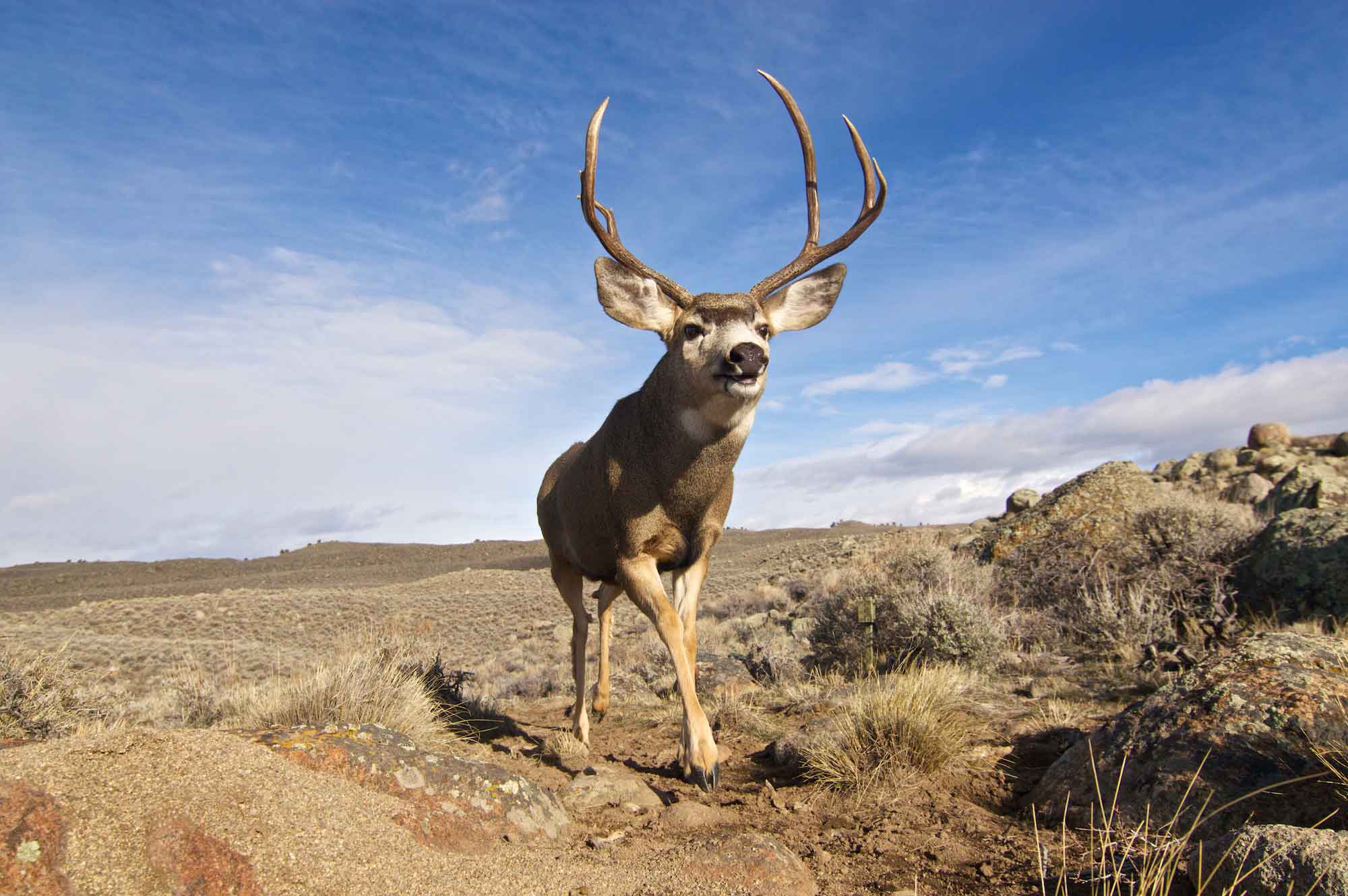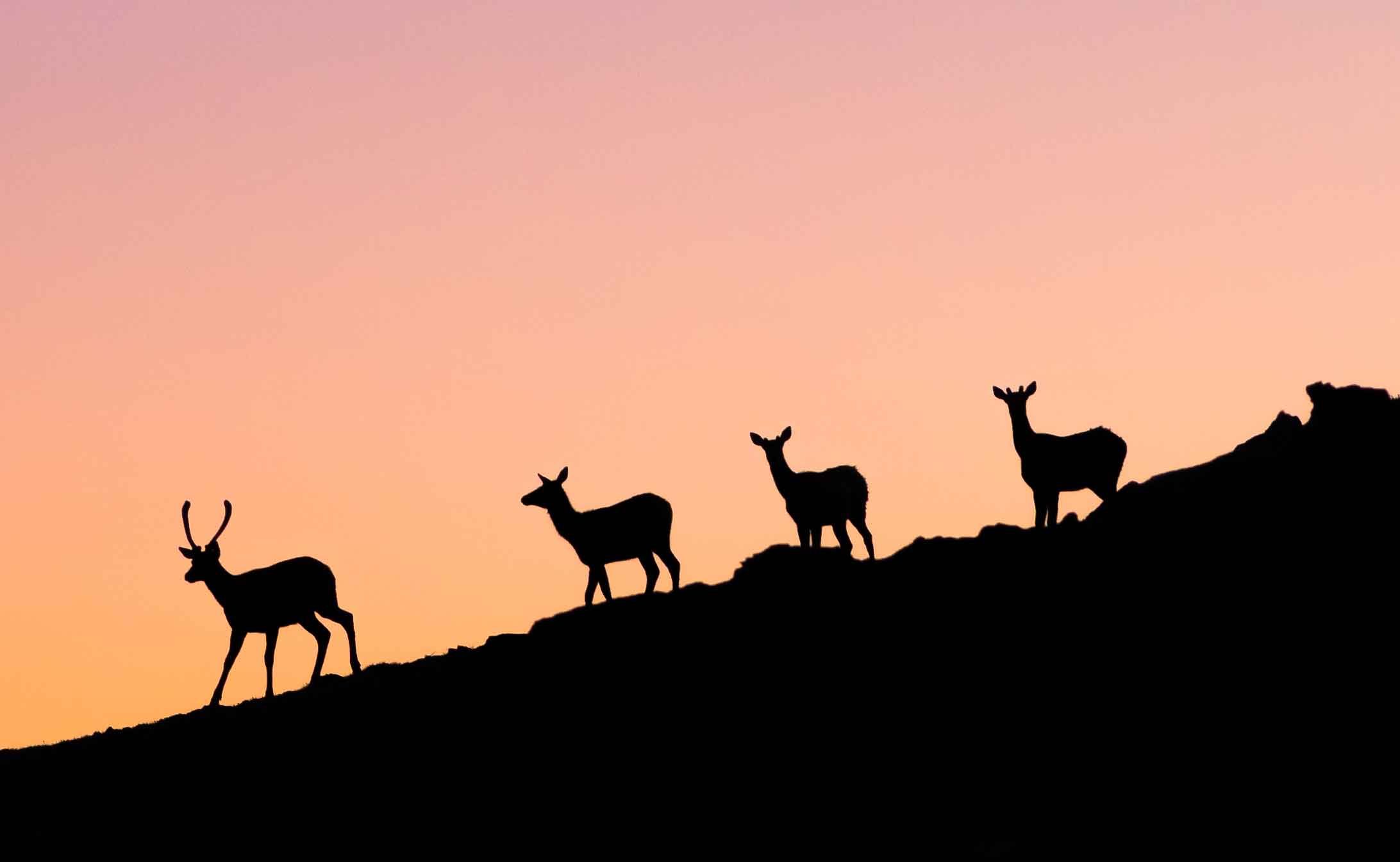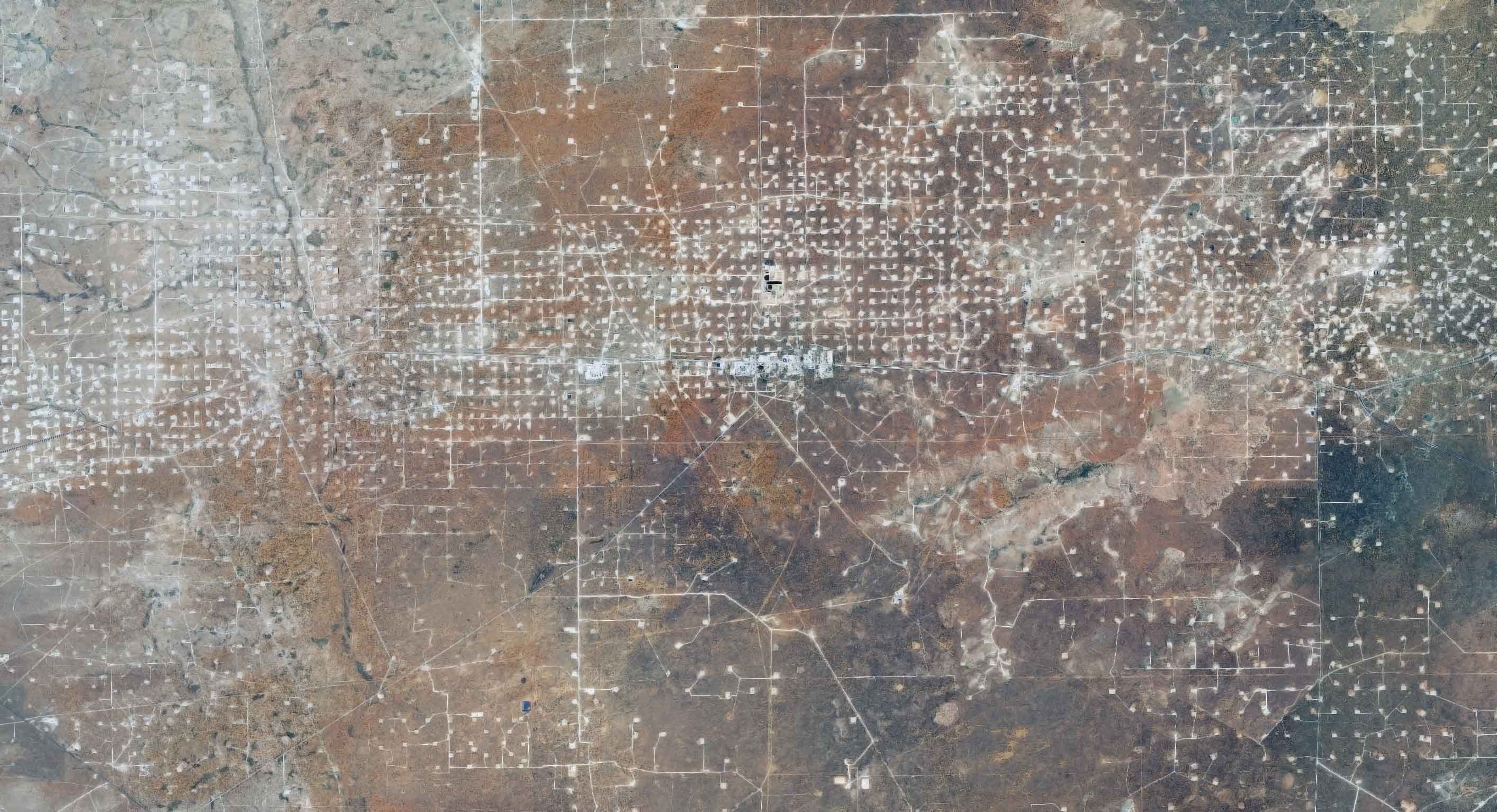In southwestern Wyoming these areas include migration corridors for mule deer and crucial winter habitats for mule deer, elk and pronghorn.
 Wyoming Mule Deer - Joe Riis - Wyoming Migration Initiative
Wyoming Mule Deer - Joe Riis - Wyoming Migration Initiative
In February 2018, the US Department of the Interior announced a secretarial order aimed at enhancing big game populations by improving winter range and migration corridors. Former oil industry lobbyist and now Secretary of Interior David Bernhardt was put in charge of the order’s implementation.
The order directed bureaus within the department to work closely with western states to enhance and improve the quality of these areas on federal lands.
Big game such as Rocky Mountain elk, mule deer and pronghorn antelope were the target species of the order. As part of the order, states were required to map out priority big game landscapes through State Action Plans.
In October 2018, states published their State Action Plans with priority big game landscapes shown on the map below in green.
We focused on Montana, Wyoming, Nevada, Utah, Colorado and New Mexico because of the large amount of oil and gas leasing in those states. These areas encompass over 130,000 square miles and provide habitat and connectivity for many wildlife species.
Since the release of the State Action Plans in October of 2018, DOI has continued pushing oil and gas development on nearly 1.2 million acres of priority big game landscapes identified by states. Lease locations are shown in red on the map.
The areas shown in yellow are crucial wildlife migration corridors and winter habitat identified by the states. In many cases leases are being sold directly within crucial habitat for big game.
In southwestern Wyoming these areas include migration corridors for mule deer and crucial winter habitats for mule deer, elk and pronghorn.
 Wyoming Mule Deer - Joe Riis - Wyoming Migration Initiative
Wyoming Mule Deer - Joe Riis - Wyoming Migration Initiative
Similar areas are being leased in Colorado. Here public lands are being leased directly in migration corridors for pronghorn and mule deer and as well as crucial winter habitat.
 Colorado Elk - Bryce Bradford - FLICKR
Colorado Elk - Bryce Bradford - FLICKR
The same pattern is evident in Nevada again with leases in corridors and crucial winter habitats.
 Pronghorn in Nevada - Chip Carroon - BLM Nevada
Pronghorn in Nevada - Chip Carroon - BLM Nevada
Even in one of the busiest oil and gas regions in the world, Interior continues to lease priority wildlife habitat to oil and gas companies.
 Satellite image of energy development in New Mexico - USDA NAIP Imagery
Satellite image of energy development in New Mexico - USDA NAIP Imagery
Recent scientific studies show that energy development is a significant cause of the decline in big game populations. Examples of these include long-term studies of energy development and mule deer and pronghorn winter behavior and of mule deer migration.
Rocky Mountain Wild has analyzed the overlap between oil and gas leasing and important big game habitat. In total, DOI has attempted to lease nearly 1.2 million acres and ultimately offered 918,000 acres for oil and gas development in the priority landscapes since they were identified by the states in October 2018. Over half (472,000) of those acres were in the most crucial habitat for big game identified by the states, causing potentially irreparable harm to the west’s wildlife.
See more results and learn about the methods Rocky Mountain Wild used in this study in this paper
Tell Secretary Bernhardt: Stop selling out wildlife corridors for oil and gas development. Sign our petition today!
Continue scrolling to take the map controls and dive deeper into the datasets.